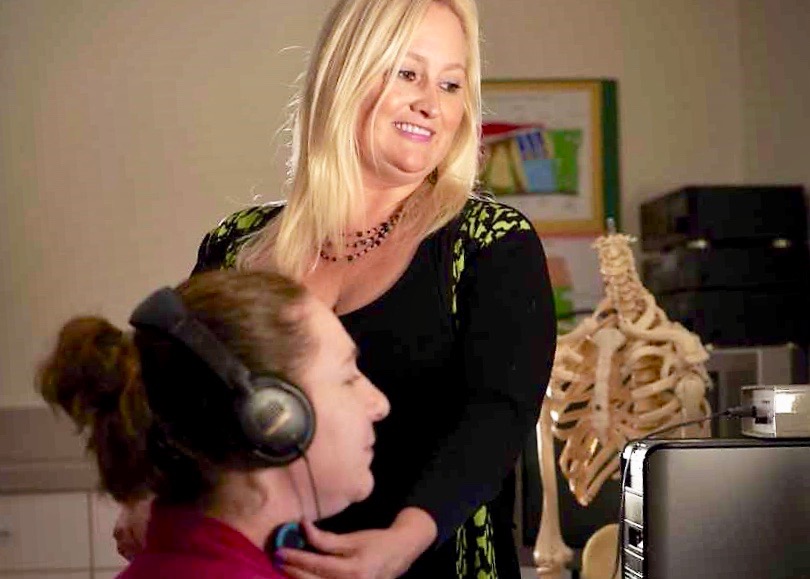Voice Disorders Significantly Affect Listeners, Too

Air traffic controllers, teachers and university professors have a high prevalence of voice disorders referred to as “dysphonia.”
“Fly heading two three zero, runway two seven left, cleared for takeoff.” Air traffic controllers are among the 25 to 45 percent of the workforce in the United States who use their voices professionally. It is imperative for their listeners to understand what they are communicating. Air traffic controllers, teachers and university professors have a high prevalence of voice disorders referred to as “dysphonia.” Other professions also are at risk including clergy, attorneys, counselors and performers.
Voice disorders are not just a problem for these professions. In fact, 1 in 13 American adults reported a voice problem in the past year. Only a minority of them got treatment, further perpetuating the overall problem. Voice disorders are a common occurrence for many people throughout their lifetime. Although it is well understood how voice disorders impact the speaker, there is little research on how voice disorders impact the listener.
Researchers from Â鶹ľ«Ć·ĘÓƵ and conducted a study to determine if there are differences in speech intelligibility (ability of a listener to recover a speaker’s message) in healthy voices compared to those who have voice disorders such as breathiness, hoarseness, loss of voice or a “croaky” voice. They also wanted to know if using listener “strategies” such as paying close attention to the words or using other words to try to figure out the message would increase speech intelligibility. To date, no studies have investigated if listener strategies improve intelligibility scores in speakers with voice disorders.
In addition, the researchers wanted to explore if the listener’s overall impression of a person’s speech or voice quality would impact how they rate speech intelligibility. Speakers with voice disorders are judged more negatively than speakers without voice disorders. The researchers constructed the study to include information to help identify which voice qualities may be at play during a reduction of intelligible speech.
“A speaker’s intelligibility is impacted not only by the abilities of the speaker, but also by the listening environment and skills employed by the listener,” said , Ph.D., first author and an associate professor in the in FAU’s . “Moreover, listeners receive less salient information to process when they are listening to a person with a voice disorder.”

Results of the study, published in the , show that overall, speakers with voice disorders demonstrated a tenfold increase in the number of speech intelligibility errors compared to speakers with healthy voices. In addition to significant differences in the number of errors between healthy speakers and those with voice disorders, listeners also had significantly more overall errors on content words (listener transcribed “cat” for “dog”) than articles (listener transcribed “the” for “a”) with voice type.
Certain vowels were impacted more than others and noise and lack of harmonic components increased as the severity of perceived voice disorders increased. Seventy-eight percent of the variance associated with intelligibility errors by listeners was due to the presence or absence of voice disorders.
The researchers also discovered that the use of listener strategies did not improve speech intelligibility scores and did not increase the number of words correctly transcribed by listeners. Of interest, no matter what strategies listeners were asked to use, the majority of them reported the use of “context” to better understand the speakers and the unintelligible words.
Finally, the researchers explored the results of the voice quality ratings and found that speakers with a “breathiness” quality in voice ranging from moderate to severe had a greater number of speech intelligibility errors. Breathiness was the most predictive factor (41 percent) of the variance of speech intelligibility errors.
“Studies have shown that student auditory comprehension in the classroom is reduced when teachers have voice disorders, which has a negative impact during classroom learning,” said Porcaro. “People with voice disorders may need to take special care to ensure that their listeners understand their intended message and should assess their communicative situations and make appropriate modifications as needed. For example, using gestures or reducing background noise could be useful strategies to improve accuracy and the ability to be understood.”
Co-authors of the study, “,” are , Ph.D.; Nicole King, M.S.; Cassandra Hood, M.S., Erin Campbell, M.S.; and Layla White, M.S., all with Towson University; and Jacqueline Veraguas, M.S., FAU’s Department of Communication Sciences and Disorders.
-FAU-
Tags: education | faculty and staff | research | science